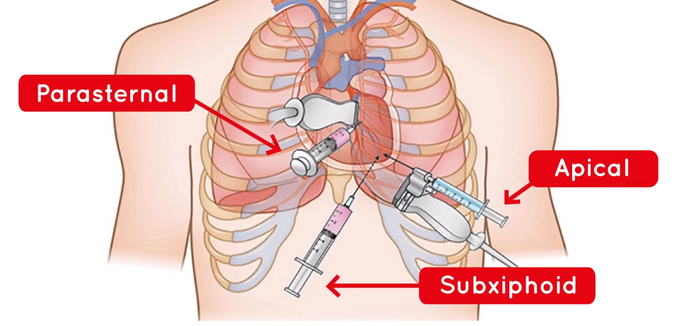Pericardial Tap / Pericardiocentesis
Overview
The protective sack that surrounds the heart is the pericardium.
Normally there is a small amount of fluid between this pericardium and the heart, which helps cushion the heart and helps reduced friction with other chest structures.
A build up of fluid in the pericardium is referred to a pericardial effusion.
When there is excessive fluid build up, there may be interference with myocardial function leading to compromised hemodynamics. This is known as cardiac tamponade and requires urgent attention.
There can be various types of fluid built up in the pericardium
-
Hemorrhagic: primarily blood, often resulting from trauma or a ruptured heart wall (may be caused by a cardiac procedure or myocardial infarction)
-
Serosanguineous: mix of blood and serous fluid (a clear, watery fluid). Often seen in inflammatory conditions like pericarditis or in cases of trauma or other causes of bleeding into the pericardium
-
Chylous: milky like fluid which contains lymph (a fluid rich in fats and proteins). It can be caused by trauma or blockages in the lymphatic system. Can be idiopathic or secondary to conditions like trauma or surgery, malignancy, or infection

Procedure
Equipment
-
Pericardiocentisis kit
Procedure
-
TTE (Transthoracic echo) is used (sometimes in conjunction with xray) to determine the entry point for the needle to be inserted.
-
A needle is used to puncture the pericardium and a sheath in inserted
-
Fluid is then drained through a syringe and the total fluid volume is calculate post case.
-
Depending on the clinical situation, the fluid may be sent for testing (?infection)
-
There should be a significant improvement in blood pressures (NIBP) as the fluid is removed





